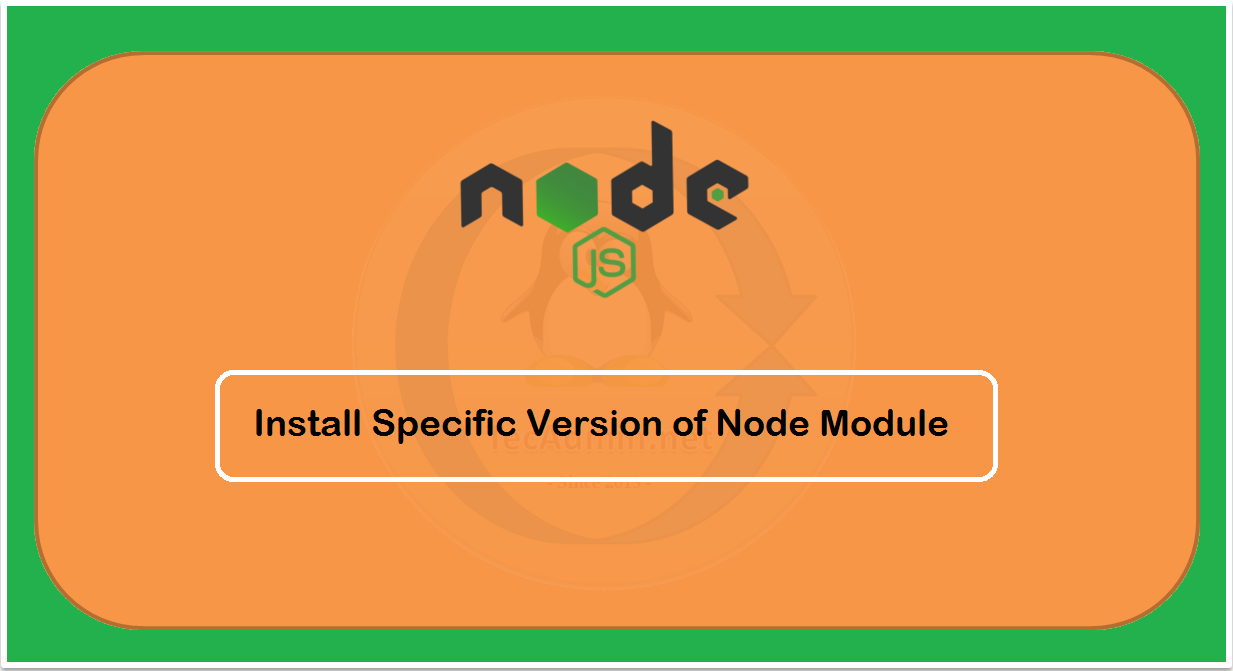
Let's look at some examples in more detail.
#Npm install package with version syntax install#
It's important that npm install is run in the same location as the package.json file. The package.json file dictates what modules will get installed in the node_modules folder. When run with arguments, npm install downloads specific modules to the node_modules folder. When run without arguments, npm install downloads dependencies defined in a package.json file and generates a node_modules folder with the installed modules. Npm install can be run with or without arguments. If everything is fine with your module, then it will be published in the repository and will be accessible to install using NPM like any other Node.js module.Npm install downloads a package and it's dependencies. Once package.json is generated, use the following command to register yourself with NPM repository site using a valid email address.Įmail: (this IS public) is time now to publish your module − You can take help from the above-mentioned package.json file to understand the meanings of various information demanded. You will need to provide all the required information about your module. Save it as a dependency in the package.json file. Use 'npm install -save' afterwards to install a package and See 'npm help json' for definitive documentation on these fields It only covers the most common items, and tries to guess sane defaults. This utility will walk you through creating a package.json file. Let's generate package.json using NPM, which will generate the basic skeleton of the package.json.
#Npm install package with version syntax update#
Update package.json and change the version of the dependency to be updated and run the following command.Ĭreating a module requires package.json to be generated. Once NPM uninstalls the package, you can verify it by looking at the content of /node_modules/ directory or type the following command − Use the following command to uninstall a Node.js module. Repository − repository type and URL of the package NPM automatically installs all the dependencies mentioned here in the node_module folder of the package. "shasum": "8df3d5a9ac848585f00a0777601823faecd3b148",Ĭontributors − name of the contributors to the packageĭependencies − list of dependencies. reporter spec -check-leaks test/ test/acceptance/" report lcovonly -require test/support/env "test-travis": "istanbul cover node_modules/mocha/bin/_mocha reporter tap -check-leaks test/ test/acceptance/", "test-tap": "mocha -require test/support/env require test/support/env -reporter dot -check-leaks test/ test/acceptance/",

"test-cov": "istanbul cover node_modules/mocha/bin/_mocha reporter spec -bail -check-leaks test/ test/acceptance/", "description": "Fast, unopinionated, minimalist web framework", Let's open package.json of express package present in node_modules/express/ Package.json is present in the root directory of any Node application/module and is used to define the properties of a package. ├── can use the following command to check all the modules installed globally − Here, the first line shows the module version and the location where it is getting installed. This will produce a similar result but the module will be installed globally.

Now let's try installing the express module using global installation. Such dependencies can be used in CLI (Command Line Interface) function of any node.js but cannot be imported using require() in Node application directly. Globally installed packages/dependencies are stored in system directory. For example, when we installed express module, it created node_modules directory in the current directory where it installed the express module.ĭrwxr-xr-x 3 root root 20 Mar 17 02:23 node_modulesĪlternatively, you can use npm ls command to list down all the locally installed modules. Locally deployed packages are accessible via require() method. Here local mode refers to the package installation in node_modules directory lying in the folder where Node application is present. Now you can use this module in your js file as following −īy default, NPM installs any dependency in the local mode. There is a simple syntax to install any Node.js module −įor example, following is the command to install a famous Node.js web framework module called express − usr/bin/npm -> /usr/lib/node_modules/npm Just use the following command from root − If you are running an old version of NPM then it is quite easy to update it to the latest version. To verify the same, open console and type the following command and see the result − NPM comes bundled with Node.js installables after v0.6.3 version. Online repositories for node.js packages/modules which are searchable on Ĭommand line utility to install Node.js packages, do version management and dependency management of Node.js packages. Node Package Manager (NPM) provides two main functionalities −


 0 kommentar(er)
0 kommentar(er)
